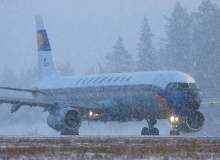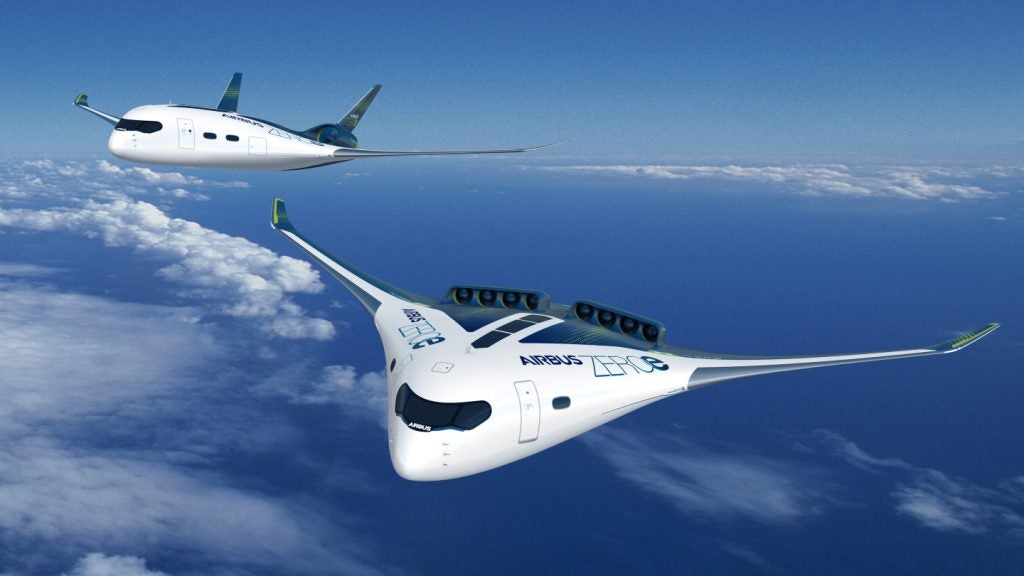

When it comes to winter operations at airports, there’s a good reason that the first signs of snow are cause for dread. A sudden dump of snow or freezing rain can cause incalculable damage to the day-to-day operations of airports and cause untold misery for passengers trapped by mass flight cancellations.
The dramatic blizzard that hit the north-eastern US in January this year was a potent demonstration of the disruptive power of heavy snowfall. As inches of snow piled up across New York, New Jersey, Massachusetts and elsewhere, major airports including JFK, LaGuardia and Newark were forced to virtually shut down until conditions improved. In total, more than 9,000 flights into and out of the region were cancelled or delayed.
For airports operating at almost full capacity, it can sometimes seem that no amount of preparation can protect against the effect of heavy snowstorms. Back in 2012, the UK’s first significant snowfall in February prompted pre-emptive action from Heathrow Airport, which cancelled 30% of flights before a single snowflake hit the tarmac.
"Given that we are running at more than 99% capacity it is the only way to get slack in the system," said a Heathrow spokesman at the time.
See Also:
Naturally, the best airports in the world at dealing with snow are those that expect it every year without fail. Such is the case for many airports in Scandinavia, where the winter season is long and clearing snow from runways and other infrastructure is a mundane – though vital – component of winter operations.
How well do you really know your competitors?
Access the most comprehensive Company Profiles on the market, powered by GlobalData. Save hours of research. Gain competitive edge.

Thank you!
Your download email will arrive shortly
Not ready to buy yet? Download a free sample
We are confident about the unique quality of our Company Profiles. However, we want you to make the most beneficial decision for your business, so we offer a free sample that you can download by submitting the below form
By GlobalDataScandinavian snow-how: a point of pride
While other major airports in Europe and elsewhere suffer huge swathes of cancellations and full closures as winter snows hit, flagship Scandinavian airports like Stockholm Arlanda, Oslo Gardermoen and Helsinki-Vantaa have managed to maintain enviable records of staying open and minimising disruption to flights. At Stockholm Airport, the workforce takes pride in never having closed due to snow in more than 50 years of operation.
"There is great pride in that track record and of course everyone would like to keep it as clear as it is right now, but let us never forget our mission and our safety target," says Stockholm Arlanda’s chief of airside / landside operations Christian Nyberg. "Our mission is to keep the operations running, but most of all we have to measure and report the actual conditions at the airport to make sure that all operators have all necessary data to perform safe operations."
In the wake of a disaster, airports play a dual role, both as refuge and transit points for critical humanitarian relief.
The near-certainty of heavy snows each year – not to mention the sheer length of the winter season – makes it an easier decision for airports like these to invest in top-of-the-range snow-clearing vehicles and extensive training programmes. As a result, these hubs have built up an almost unparalleled expertise in tackling snowstorms, a specialism that has been playfully referred to as ‘snow-how’.
"We are proud of our winter maintenance program," says the head of Oslo Airport’s airfield maintenance section Thomas Toftevåg. "Oslo Airport is located in an area that historically has winter and snow from early November until late March. Naturally, it is very important to uphold regularity and punctuality regardless of seasonal variation in the weather."
Machines, manpower and maintenance
The focus on winter operations has resulted in large, flexible airfield maintenance teams that might number between 30 and 50 workers in the summer months, then ramp up to more than 100 once the late autumn arrives. These teams man heavy-duty ploughing, sweeping and blowing (PSB) vehicles, such as Oslo Airport’s 40-tonne TV-2000, the largest in the world, which can remove about 10,000 tonnes of snow in under an hour, clearing a 3km runway in just 15 minutes.
"At Arlanda, we use about a hundred different vehicles just for snow-clearing purposes," says Nyberg. "On the runways and taxiways, the PSBs are used, followed by anti-skid spreaders, snow blowers and friction test cars. At the apron area/stands we use front wheeled loaders in different sizes. It quickly gets heavy, since the line of snow left behind by the PSB machines can weigh about 120 kilos per metre, so Stockholm Arlanda Airport’s snow throwers have high capacity – they handle 7,000 to 8,000 tonnes of snow per hour."
"If we didn’t have the right equipment needed to perform this it would be like fishing without a hook," he adds.
Toftevåg notes that speed, capacity and optimising the width of ploughs and brooms are key factors for success. He also argues that a robust maintenance programme is essential.
"We have very good equipment and emphasise the importance of thorough equipment maintenance," he says. "If we keep our equipment operational, we will handle most winter events. Our biggest chance of failure is poor or mediocre maintenance."
A team effort: snow removal training
Of course, having the right resources to do the job is only the first part of the puzzle. Equally important is the training, co-operation and operational cohesion required to maintain a seamless 24-hour snow clearance effort. Indeed, during Heathrow’s snow troubles in 2012, poor co-ordination between airline de-icing staff and the airport’s snow clearance teams was noted as an exacerbating factor.
Nyberg explains the intricacy and communication necessary for effective winter operations. "Snow removal is carried out in snow removal teams, which clear special routes at intervals of 35 to 60 minutes. We have different routes depending on weather and traffic. The team is led by a snow removal supervisor, who also has direct contact with the air traffic control tower.
"When ploughing the runways at Stockholm Arlanda Airport, up to ten vehicles are running in formation. The drivers follow their maneuvers precisely so air controllers, who also know the routines, can time arriving and departing flights down to the minute."
The UK Government has received 19 bids for its Regional Air Connectivity Fund.
Airlines at Arlanda are also kept in the loop through meetings called Tactical Traffic Forums, which are convened when heavy snow is forecast. These meetings bring together ATC staff, the airport’s snow co-ordinator, airline representatives and a host of other stakeholders to ensure a united response. Toftevåg also emphasises the importance of regular meetings, and says that an immediate evaluation is carried out after every winter season to improve performance.
"Last season we experienced a massive snowfall – 445mm in 24 hours and 50mm per hour some hours," he says. "We have evaluated this event, and for next season we have made a plan to increase our robustness."
Practice makes perfect
Training lies at the heart of this success; at Oslo all associated staff are expected to top up their skills on a yearly basis. "We have different courses for each category of personnel," Toftevåg says. "All courses are revised each year to include last season’s lessons identified. We start our training in mid-September, and during a two month period all personnel – approximately 280 – have received training."
Training isn’t limited to the run-up to winter, either. "Snow removal is a year-round business," says Nyberg. "As soon as the season ends, experiences, results, claims, and best practices are collected in meetings together with the airline companies, ground handlers, the control tower as well as our own personnel to work through improvements for the coming season. If routines, work instructions or machines are changed, practice starts early next season to make sure [we] have everything in place for the first snow."
A general trend for low staff turnover in these roles means that drivers and support staff gain a high level of expertise, the kind that comes from constant experience and refinement, day after day and season after season. Plough drivers work flat-out with few or no breaks during heavy periods of snow, with office-based staff ferrying coffee and sandwiches out to their fellow workers. Drivers can also often sleep over at the airport if they feel the need.
Looking to the future, both Nyberg and Toftevåg acknowledge that there are always new ways to improve their systems. "We are working on optimising the use of chemicals, and try to increase our understanding and competence regarding weather prediction," says Toftevåg. "We have challenges with freezing rain and are aware of some very interesting developments [in] sensors and prediction tools."
Nyberg, meanwhile, emphasises the need for the snow clearance teams to improve Arlanda’s environmental performance, even as the airport expands its passenger capacity. By 2020, the team, working with vehicle manufacturers Aebi Schmidt and Volvo, aims to make its winter fleet completely free of fossil fuels.
"This winter Arlanda will receive 14 new biogas PSBs," he says. "When the new vehicles adapt to renewable biogas it will be a crucial step to achieve the [2020] goal fully. Our focus is both economic and environmental sustainability. In addition to carbon reduction, it involves a reduction in fuel costs and a standardisation of the vehicles fleet with lower maintenance costs."
Perhaps this level of snow-clearing success will only ever be achieved by airports located in wintry regions where heavy investment in the requisite labour and equipment makes economic sense. Nevertheless, for major hub airports that are periodically battered into submission by sudden flurries, it might pay dividends to take a few pages out of the book of snow-how and update their own best practices. In any case, it’s no surprise that pride is a recurring theme for the airports that can stand up to the worst that winter has to offer while others sink in a sea of white.







